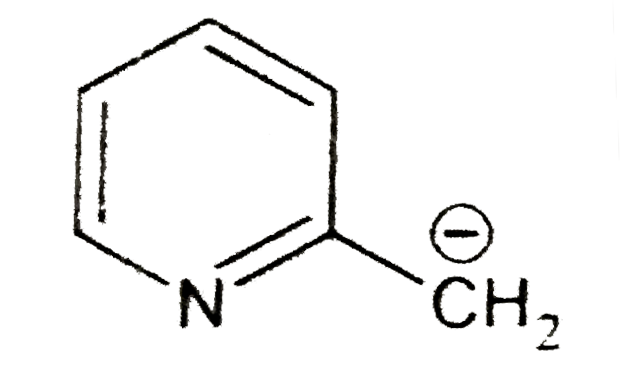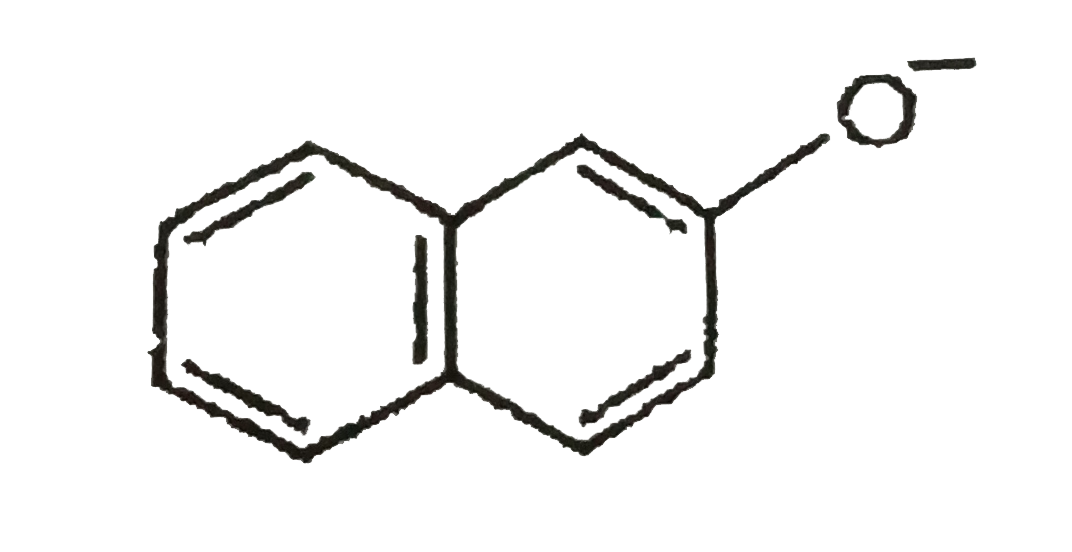The maximum number of no bond resonating structure is possible in
CH3−⊕CH2
H3C−⊕CH−CH3
C2H5−CH3∣C⊕−CH3
H3C−CH3∣C⊕−CH3
To solve the question regarding the maximum number of no-bond resonating structures possible, we will analyze the concept of no-bond resonance (also known as hyperconjugation) and determine which given structure allows for the greatest number of hydrogen atoms to participate in this resonance.
1. Understanding No-Bond Resonance:
- No-bond resonance occurs when there are adjacent carbon atoms with a positive charge and hydrogen atoms that can donate their electrons to stabilize that positive charge. This is often referred to as hyperconjugation.
2. Analyzing the Options:
- We will evaluate the number of hydrogen atoms available for donation in each option, as this will determine the number of no-bond resonance structures.
3. Option 1:
- Structure: CH3-CH2^+-H
- Here, the positive charge is on a carbon atom that is bonded to 3 hydrogen atoms.
- Total hydrogen atoms available for hyperconjugation: 3
- No-bond resonance structures: 3
4. Option 2:
- Structure: CH3-CH2-CH^+-CH3
- The positive charge is on a carbon atom that is bonded to 2 hydrogen atoms (from CH2) and 3 from each CH3.
- Total hydrogen atoms available for hyperconjugation: 3 (from CH3) + 3 (from CH3) + 2 (from CH2) = 8
- No-bond resonance structures: 6
5. Option 3:
- Structure: CH3-CH2-CH3^+-H
- The positive charge is on a carbon atom that is bonded to 3 hydrogen atoms from CH3 and 2 from CH2.
- Total hydrogen atoms available for hyperconjugation: 3 (from CH3) + 3 (from CH3) + 2 (from CH2) = 8
- No-bond resonance structures: 8
6. Option 4:
- Structure: CH3^+-CH2-CH3^+-CH2-CH3
- Each positive charge is on a carbon atom that is bonded to 3 hydrogen atoms.
- Total hydrogen atoms available for hyperconjugation: 3 (from first CH3) + 3 (from second CH3) + 3 (from third CH3) = 9
- No-bond resonance structures: 9
7. Conclusion:
- After analyzing all options, we find that Option 4 has the maximum number of no-bond resonance structures, which is 9.
Final Answer:
The maximum number of no-bond resonating structures is possible in Option 4.
- No-bond resonance occurs when there are adjacent carbon atoms with a positive charge and hydrogen atoms that can donate their electrons to stabilize that positive charge. This is often referred to as hyperconjugation.
- We will evaluate the number of hydrogen atoms available for donation in each option, as this will determine the number of no-bond resonance structures.
- Structure: CH3-CH2^+-H
- Here, the positive charge is on a carbon atom that is bonded to 3 hydrogen atoms.
- Total hydrogen atoms available for hyperconjugation: 3
- No-bond resonance structures: 3
- Structure: CH3-CH2-CH^+-CH3
- The positive charge is on a carbon atom that is bonded to 2 hydrogen atoms (from CH2) and 3 from each CH3.
- Total hydrogen atoms available for hyperconjugation: 3 (from CH3) + 3 (from CH3) + 2 (from CH2) = 8
- No-bond resonance structures: 6
- Structure: CH3-CH2-CH3^+-H
- The positive charge is on a carbon atom that is bonded to 3 hydrogen atoms from CH3 and 2 from CH2.
- Total hydrogen atoms available for hyperconjugation: 3 (from CH3) + 3 (from CH3) + 2 (from CH2) = 8
- No-bond resonance structures: 8
- Structure: CH3^+-CH2-CH3^+-CH2-CH3
- Each positive charge is on a carbon atom that is bonded to 3 hydrogen atoms.
- Total hydrogen atoms available for hyperconjugation: 3 (from first CH3) + 3 (from second CH3) + 3 (from third CH3) = 9
- No-bond resonance structures: 9
- After analyzing all options, we find that Option 4 has the maximum number of no-bond resonance structures, which is 9.
The maximum number of no-bond resonating structures is possible in Option 4.
Topper's Solved these Questions
- ORGANIC CHEMISTRY : SOME BASIC PRINCIPLES AND TECHNIQUES Book:AAKASH INSTITUTEChapter:ORGANIC CHEMISTRY : SOME BASIC PRINCIPLES AND TECHNIQUES Exercise:Assignment(SECTION-A)
Explore 60 Videos
- ORGANIC CHEMISTRY : SOME BASIC PRINCIPLES AND TECHNIQUES Book:AAKASH INSTITUTEChapter:ORGANIC CHEMISTRY : SOME BASIC PRINCIPLES AND TECHNIQUES Exercise:Assignment(SECTION B)
Explore 3 Videos
- ORGANIC CHEMISTRY : SOME BASIC PRINCIPLES AND TECHNIQUES Book:AAKASH INSTITUTEChapter:ORGANIC CHEMISTRY : SOME BASIC PRINCIPLES AND TECHNIQUES Exercise:Try Yourself
Explore 23 Videos
- MOCK_TEST_20Book:AAKASH INSTITUTEChapter:MOCK_TEST_20Exercise:EXAMPLE
Explore 28 Videos
- ORGANIC CHEMISTRY: SOME BASIC PRINCIPLE AND TECHNIQUESBook:AAKASH INSTITUTEChapter:ORGANIC CHEMISTRY: SOME BASIC PRINCIPLE AND TECHNIQUESExercise:TRY YOURSELF
Explore 28 Videos
Similar Questions
Knowledge Check
Maximum number of bonds in
ACO2BH2OCH2SDAll have same number of bonds because all are triatomic molecule
The number of resonating structures possible forA4B5C3D6How resonating structures are possible for benzene?
Atwo moles of hyloxal and one mole of acetaldehydeBThreeCtwoDFour
Which of the following has the miximum number of resonating structure ?
View SolutionThe number of resonating structures of aniline is :-
View SolutionThe number of resonating structures of aniline is
View SolutionThe number of resonating structures of anilinium ion is
View SolutionNumber of resonance structure of

View Solution
